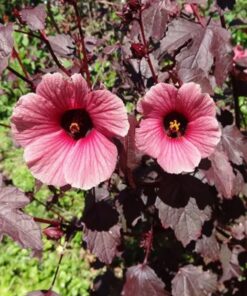Ornamental chilli mix color pack of 20 seeds Open Pollinated Round Type
₹50.00
In stock
Ornamental chilli, Capsicum annuum, can add spice to a garden. Commonly grown for their aesthetic value, the plants can be incorporated in garden beds or borders, or serve their purpose as houseplants. Ornamental peppers can thrive in U.S. Department of Agriculture plant hardiness zones 4 through 11. In the cooler zones, they’re grown as annuals, and in zones 9b through 11, they’re perennials. To successfully grow ornamental peppers, start them indoors from seed approximately eight weeks before the last frost date in your area.
Ornamental chilli Disinfect a seed tray in a solution of one part household bleach to nine parts water. Soak the tray up to 15 minutes and allow it to air-dry.
2
Fill the seed-raising tray with moist potting soil up to 3/4 inch from the rim. Press down on the soil, so it’s firm in the tray.
3
Sow the ornamental pepper seeds over the soil surface. Cover them with a 1/4-inch layer of soil. Lightly press down on the soil, so it’s firm over the seeds.
4
Fill a mist bottle with warm water and moisten the soil with it.
5
Cover the tray with plastic wrap and some newspaper. Stretch plastic wrap over the seed-raising tray to help the soil maintain moisture. Place newspaper over the plastic to keep the temperature constant. Remove the coverage for a few minutes every day to check for mold and to aerate the soil.
6
Set the seed-raising tray in a warm area of the house. Aim for a temperature of approximately 75 degrees Fahrenheit. Place a heating mat underneath the tray or use a space heater, if needed.
7
Remove the plastic wrap as soon as the seeds germinate, which is in about two weeks. Place the tray in a sunny window so they seedlings can grow. As an alternative light source, position fluorescent lights above the tray.
Things You Will Need
- Seed-starting tray
- Bleach
- Potting soil
- Ornamental pepper seeds
- Mist bottle
- Plastic wrap
- Newspaper
- Heating mat or space heater
- Fluorescent lights
Tip
- Harden off the plants by placing them outdoors in a semi-shaded area for a few hours every day, over a one-week period. Gradually extend their time outdoors and increase their exposure to the sun. Permanently transplant the seedlings outdoors approximately two weeks after the last frost date in your area.
| Color | Mix |
|---|---|
| Germination Level | Easy |
| Growth Pattern | Up right Straight |
| Hybrid or Open Pollinated | Open Pollinated |
| Ideal location | Full sun |
| Origin Country | India |
Be the first to review “Ornamental chilli mix color pack of 20 seeds Open Pollinated Round Type” Cancel reply
You must be logged in to post a review.
Related products
Summer Flower seeds
Gaillardia pulchella Double mix flower seeds 30 seeds Open Pollinated
Summer Flower seeds
Summer Flower seeds
Celosia plumosa dwarf mix color pack of 40 seeds Open Pollinated












Reviews
There are no reviews yet.